link to page 1 link to page 2 link to page 2 link to page 2 link to page 3 link to page 3 link to page 4 link to page 4 link to page 5 link to page 6 link to page 7 link to page 7 link to page 7 link to page 7 link to page 8 link to page 8 link to page 8 link to page 9

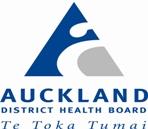






 If printed, this document is only valid for the day of printing.
If printed, this document is only valid for the day of printing.
Constipation in Palliative Care - Adult
Unique Identifier
CP01/BRD/149 - v04.00
Document Type
Clinical Guideline
Risk of non-compliance
very unlikely to result in harm to the patient/DHB
Function
Clinical Practice, Patient Care
User Group(s)
Auckland DHB only
Organisation(s)
Auckland District Health Board
Directorate(s)
All directorates
Department(s)
All departments
Used for which patients? All adult patients with palliative care needs
Used by which staff?
All clinical staff members that care for adult patients with palliative
care needs
Excluded
Child Health
Keywords
Constipation, palliative care, bowel, laxative
Author
Clinical Nurse Specialist - Palliative Care
Authorisation
Owner
Chief Nursing Officer
Delegate / Issuer
Strategic Clinical Director - Palliative Care
Edited by
Document Control
First issued
June 2010
This version issued
08 March 2021 - updated
Review frequency
3 yearly
Classification history
Reclassified from CP10/Adult/039. User group is wider than the
two adult health directorates.
Contents
1. Purpose guideline ......................................................................................................................... 2
2. Guideline management principles and goals ............................................................................... 2
3. Process for treating constipation ................................................................................................. 2
Flow chart to aid decision making ......................................................................................... 3
4. Contraindications .......................................................................................................................... 3
5. Specific information on laxatives .................................................................................................. 4
First Line: ORAL...................................................................................................................... 4
Second Line: RECTAL ............................................................................................................. 5
High mineral oil retention enema administration ................................................................ 6
Opioid antagonists - only with Palliative care specialist advice ............................................ 7
Bowel management in paralysed or spinal cord compression patients ............................... 7
Manual removal of stool ....................................................................................................... 7
6. Ongoing assessment ..................................................................................................................... 7
7. Supporting evidence ..................................................................................................................... 8
8. Associated documents .................................................................................................................. 8
9. Disclaimer ..................................................................................................................................... 8
10. Corrections and amendments ...................................................................................................... 9
Back to Contents
Constipation-in-Palliative-Care-Adult_2021-03-08.docx
Page 1 of 9
link to page 1

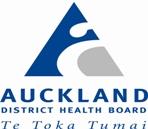 If printed, this document is only valid for the day of printing.
If printed, this document is only valid for the day of printing.
1. Purpose guideline
The purpose of this guideline is to manage constipation in people with palliative care needs.
Constipation is one of the most common problems in people with palliative care needs and can
cause extreme suffering, both physical and psychological. Constipation is often preventable by
correct prescribing at the appropriate time.
2. Guideline management principles and goals
Thorough assessment and examination of the person including; rectal exam, medication,
review and assessment for obstruction. Abdominal X-ray may be helpful.
People can become agitated, confused and delirious because they are constipated.
Review regularly aiming for a bowel motion every two to three days regardless of oral intake.
Consider escalation of treatment if bowels not open for two days.
Normal bowel movements are aided by adequate hydration, mobility, privacy and nutrition.
Choice of natural aperients may be helpful and reduce medication need e.g. prunes, kiwifruit,
Kiwi Crush, herbal products and juices – if accepted and tolerated.
In the last days of life, it may not be appropriate to treat constipation.
Laxatives should be prescribed at the time of prescribing opioids.
Lactulose should not be used in people who have poor fluid intake and is often poorly
tolerated in very ill patients. It is not the drug of first choice.
Avoid oil enemas in people with a stoma as this effects adherence of appliances.
Avoid phosphate-containing products in patients with end-stage renal failure.
Note: For intractable constipation not responding to suggestions in this guideline please contact
the Hospital Palliative Care Team.
3. Process for treating constipation
Step
Description
1.
Assessment Frequency/consistency of bowel motions, change in pattern, abdominal
pain, nausea, environmental factors, co-morbidities, medications etc.
2.
Examination Including rectal (PR) exam – more detail below.
3.
Treat reversible causes where possible Drugs e.g. opioids, anticholinergics, ondansetron, cyclizine, chemotherapy, diuretics
Metabolic e.g. hypercalcemia, hypothyroidism, hypokalemia, diabetes
Neurological e.g. spinal cord/cauda equina compression, sacral plexopathy
Mechanical e.g. Intra/extra-luminal masses, adhesions, strictures, ascites
General e.g. low fibre/fluid intake, inactivity, weakness, depression, debility.
4.
Maximise oral laxatives (see below) and co-prescribe when starting opioids.
Back to Contents
Constipation-in-Palliative-Care-Adult_2021-03-08.docx
Page 2 of 9
link to page 1

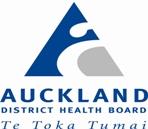
 If printed, this document is only valid for the day of printing.
If printed, this document is only valid for the day of printing.
Flow chart to aid decision making
Is rectum full on PR examination?
YES
NO
Stool is hard:
One to two glycerol +/- bisacodyl
suppositories
Consider abdominal X-ray
Stool is soft:
One to two bisacodyl
or
Microlax® suppositories
Bowel
Normal
Rectal
obstruction
impaction/loading
X-ray
PLUS
See Bowel
Macrogol up to eight sachets daily
Maximise oral laxatives
obstruction
PLUS
Docusate and senna two tablets
guideline
High mineral oil enema (at night)
(tabs) at night up to three tabs, three
FOLLOWED BY
times a day (TDS)
Stop stimulant
Sodium biphosphate enema
AND/OR
laxatives
(next morning)
Macrogol one to two sachets up to
eight daily
4. Contraindications
Rectal interventions may be contra-indicated under the flowing circumstances:
Allergy to any of the ingredients
Bowel obstruction (abdominal colic pain, no bowel sounds, no flatus)
Acute Inflammatory Bowel Disease
Severe abdominal pain associated with nausea and vomiting
Neutropenia and thrombocytopenia
Frail or near end of life – consider burden versus benefit
Recent gastrointestinal or gynaecological surgery
Recent radiotherapy to the lower pelvis unless medical consent given
Malignancy of the perianal region/bowel.
Back to Contents
Constipation-in-Palliative-Care-Adult_2021-03-08.docx
Page 3 of 9
link to page 1

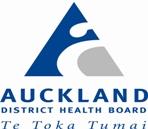
 If printed, this document is only valid for the day of printing.
If printed, this document is only valid for the day of printing.
5. Specific information on laxatives
First Line: ORAL
Before moving to a second laxative, optimise the initial laxative by titration every one-two days
according to response up to the maximum recommended or tolerable dose before changing to an
alternative or adding in another agent.
Please note that these are not listed in order of
preference. Medication
Treatment and starting
Time to act Comments
dose
Docusate (50 mg or 120 mg)
One to two tablets BD
1-3 days
As single agent, not
(softener)
(can be titrated up to
laxative of choice for
opioid-induced
maximum three tablets
TDS
constipation
Trade name:
Total daily dose – up to 480
Usually given in
Coloxyl®
mg
combination with senna
Docusate (softener) 50 mg and
Two tablets nocte
8-12 hours May cause abdominal
senna 8 mg(peristaltic stimulant) (can be titrated up to
cramps
maximum three tablets
Avoid if signs of bowel
Trade names:
TDS)
obstruction
Laxsol®
Use docusate alone in
resolving bowel
Coloxyl with Senna®
obstruction
Sennoside B/Senna (7.5 mg)
Two tablets daily
8-12 hours Can cause abdominal
(peristaltic stimulant)
(can be titrated up to
cramps
maximum three tablets
TDS)
Trade name:
Senokot®
Total daily dose – up to 80
mg
Bisacodyl (10 mg)
One tablet nocte
6-12 hours
Can cause abdominal
(peristaltic stimulant)
(can be titrated up to
cramps.
maximum six tabs)
Avoid if signs of bowel
obstruction
Trade names:
Dulcolax®
Lax-tabs®
Macrogol – 3350 (13.12g)
One sachet daily, mixed
1-2 days
For regular use, EACH
(osmotic laxative)
with 125 mL of water
sachet must be dissolved
(can be increased to one
in 125 mL water or juice
(i.e. 2 sachets = 250 mL
Trade names:
sachet TDS)
water or juice)
Molaxole®
Movicol®
Lax-sachet®
Back to Contents
Constipation-in-Palliative-Care-Adult_2021-03-08.docx
Page 4 of 9
link to page 1

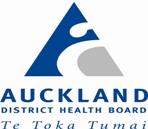
 If printed, this document is only valid for the day of printing.
If printed, this document is only valid for the day of printing.
Medication
Treatment and starting
Time to act Comments
dose
Macrogol is also used for faecal
Can be used to treat faecal
loading on AXR with rectal
loading:
treatment as below
Eight sachets in 1 litre of
water consumed over 6
hours for a maximum of
three days
(the solution is stable for
up to 6 hours)
Lactulose
Not recommended in
Up to 2
Avoid in people with
(osmotic laxative)
palliative care except in
days
decreased oral intake
people with hepatic
Can cause abdominal
encephalopathy
cramps and flatulence
Trade names:
Nausea (can be reduced
Laevolac®
by administration with
water, fruit juice, or with
meals)
Psyllium husk powder
Not recommended in
2-3 days
Can cause abdominal
(peristaltic stimulant)
palliative care due to high
cramps
fluid intake required
Avoid if signs of bowel
obstruction
Trade names:
Fibre and bulk-forming
Bonvit®
laxatives do not usually
Konsyl-D®
help constipation in
Mucilax®
patients taking opioids or
who have reduced oral
Metamucil®
intake
Source: Table adapted from Mercy Hospice Constipation Guidelines (April, 2020).
Second Line: RECTAL
Continue usual oral laxative treatment in people having rectal intervention.
Treatment and starting dose
Dose
Time to act Comments
Hard faeces in
Glycerol suppository 3.6g
3.6g daily
15-60 mins Encourages water
rectum
Trade Name:
penetration of the
faecal mass resulting
Glycerol (PSM) suppository
in stool softening
Bisacodyl suppository
Trade names:
Dulcolax®
Lax-suppositories®
Back to Contents
Constipation-in-Palliative-Care-Adult_2021-03-08.docx
Page 5 of 9
link to page 1

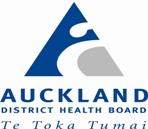
 If printed, this document is only valid for the day of printing.
If printed, this document is only valid for the day of printing.
Treatment and starting dose
Dose
Time to act Comments
Then: treat as for soft faeces in
rectum
Soft faeces in
Bisacodyl 10mg two suppositories 20mg daily
15-60 mins Must be in contact
rectum
Trade names:
with bowel wall to
be effective
Dulcolax®
Lax-suppositories®
May stimulate
colonic activity via
Sorbitol 3.125 g/5 mL + citrate
nerves in the
sodium dihydrate 450 mg/5 mL +
5-30 mins
intestinal mucosa
lauryl sulfoacetate sodium 45
and increased fluid
mg/5 mL (combination softening
uptake by stools thus
and stimulant mini enema)
softening them
Trade Names:
Microlax® enema
Micolette® enema
Phosphate sodium dibasic 59.3
Prolonged use may
mg/mL + phosphate sodium
1-10 mins
cause electrolyte
monobasic 161 mg/ml enema
imbalance.
(osmotic effect)
Trade name:
Fleet phosphate enema
Faecal loading
1. High mineral oil enema
120 mL daily
2-15
Softens surface of
on abdominal
(paraffin liquid 100% 1g/mL)
minutes
stool, has lubricant
X-ray
at night to soften
effect
Followed by
1-10
2. High Fleet phosphate enema
minutes
Stimulates bowel
next morning
Source: Table adapted from Mercy Hospice Constipation Guidelines (April, 2020).
High mineral oil retention enema administration
Previously available as the proprietary brand – Fleet Mineral Oil enema – but now discontinued, high
mineral oil retention enema used in Auckland DHB now refers to the use of at least 120 mL of 100%
liquid paraffin rectally (K. Zhao, personal communication, November 19, 2020) . This can be ordered
from Pharmacy. It does not contain peanut oil and is latex free.
Follow the steps below to administer a high mineral oil retention enema:
Step
Action
1.
Explain the procedure, obtain consent and identify any allergies or contraindications.
2.
Gather supplies, draw up 120 mL of liquid paraffin into two x 60ml BD catheter syringes.
3.
Hand wash and place an incontinence sheet underneath the patient.
4.
Attach soft size 14-18 Foley indwelling catheter onto BD catheter syringe.
Back to Contents
Constipation-in-Palliative-Care-Adult_2021-03-08.docx
Page 6 of 9
link to page 1

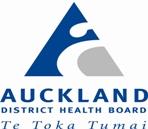


 If printed, this document is only valid for the day of printing.
If printed, this document is only valid for the day of printing.
Step
Action
5.
Put KY jelly on gauze swab and lubricate end of Foley catheter.
6.
Insert Foley catheter into anal canal until the Foley catheter is unable to be inserted any
further (this may be up to 30 cm) or if the patient complains of discomfort.
Do not force the Foley catheter tip into rectum as this can cause injury.
7.
If possible, ask the person turn towards left side (lateral recumbent position) with their
knees and hips flexed for fluid to go further into the colon.
8.
Slowly insert the BD catheter syringe (containing 60 mL of liquid paraffin) into the Foley
catheter, kink Foley catheter (to prevent backflow).
9.
Remove first BD catheter syringe and repeat this step with second BD catheter syringe
(containing 60 mL of liquid paraffin).
10.
Slowly remove the catheter and ensure foot of bed is elevated by 45° for as long as
possible, preferably overnight.
11.
Check that a phosphate enema is prescribed for the next morning.
Opioid antagonists - only with Palliative care specialist advice
Methylnaltrexone (Relistor®) is a peripheral acting opioid receptor antagonist. It can be
considered under specialist guidance for people who have opioid-induced constipation resistant to
other laxative management (see Associated documents).
Bowel management in paralysed or spinal cord compression patients
Refer to the guideline: Bowel & nutrition management in acute spinal cord injuries (see
Associated documents).
People with spinal cord or cauda equina compression have compromised bowel function - a
lack of awareness of the need to pass stool and lack of voluntary effort to assist with bowel
emptying.
These patients should be maintained on a stimulant oral laxative regimen and have regular
rectal intervention every second or third day.
Manual removal of stool
Manual removal of stool should be considered only in patients with clinical or X-ray suggestion
of impacted stool, who have not responded to appropriate oral and rectal intervention and
who are distressed by their constipation.
Manual removal of stool is a distressing intervention for the patient and should be carried out
with adequate prior analgesia and sedation in an inpatient setting (not appropriate for
community setting). Use of SC Midazolam may be indicated for its sedative and amnesic effect.
6. Ongoing assessment
Document bowel function daily (including volume of stool, colour of stool, type of stool as per
Bristol Stool Chart, ease of passage, any faecal incontinence).
Review effectiveness of management plan and modifying appropriately (responsibility of both
nursing and medical staff).
Back to Contents
Constipation-in-Palliative-Care-Adult_2021-03-08.docx
Page 7 of 9
link to page 1

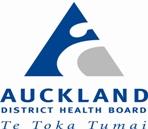 If printed, this document is only valid for the day of printing.
If printed, this document is only valid for the day of printing.
7. Supporting evidence
Mercy Hospice constipation guidelines (5th review). April 2020.
New Zealand Formulary [accessed 2020 May 01]; Available from: https://nzf.org.nz/nzf_70665
Palliative Care Formulary (PCF6). 2017 [accessed 2020 May 01]; Available from:
https://www.medicinescomplete.com/#/content/palliative/rectal-products-for-
constipation?hspl=constipation
Scottish Palliative Care Guidelines [accessed 2020 May 01}: Available from:
https://www.palliativecareguidelines.scot.nhs.uk/guidelines/symptom-
control/Constipation.aspx
Cancer Care Ontario. (April 2012). Symptom Management Guide-to-Practice: Bowel Care.
Available from: www.cancercareontario.ca
8. Associated documents
Auckland DHB policies and guidelines
Spinal Injuries – Acute: Bowel & Nutrition Management
Management of Malignant Bowel Obstruction in Palliative Care
Medications – Prescribing
Medications – Administration
Medications – Allergies & adverse drug reactions (ADRs) identification, documentation &
recording
Methylnaltrexone guideline
Other
Bristol stool chart
Clinical forms CR5504: Bowel motion chart
CR5775: Bowel chart older people’s health
Patient information and resources
Combating Constipation. Available from:
https://adhb.hanz.health.nz/site/Anaesthesia/Acute Pain/Combating Constipation Booklet.pdf
Health Navigator (May 2020). Palliative care and constipation. Available from:
www.healthnavigator.org.nz/health-a-z/p/palliative-care/palliative-care-constipation/
9. Disclaimer
No guideline can cover all variations required for specific circumstances. It is the responsibility of
the health care practitioners using this Auckland DHB guideline to adapt it for safe use within their
own institution, recognise the need for specialist help, and call for it without delay, when an
individual patient falls outside of the boundaries of this guideline.
Back to Contents
Constipation-in-Palliative-Care-Adult_2021-03-08.docx
Page 8 of 9
link to page 1

 If printed, this document is only valid for the day of printing.
If printed, this document is only valid for the day of printing.
10. Corrections and amendments
The next scheduled review of this document is as per the document classification table (page 1).
However, if the reader notices any errors or believes that the document should be reviewed
before the scheduled date, they should contact the owner or
Document Control without delay.
Back to Contents
Constipation-in-Palliative-Care-Adult_2021-03-08.docx
Page 9 of 9































